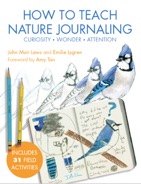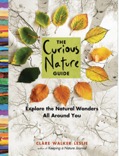Like so many things over the past few months, my blog writing has been sidelined since the arrival of the pandemic in Canada in March. I’ve been working on how to take an active PD series focused on environmental and sustainability education and shift it quickly to e-learning. We’ve been using the Zoom platform to bring EcoSchools teachers together with some success, as we’ve had more teachers involved than ever before. But my next challenge – how to do this with environmental art-making? The limitations have been daunting – the weather outside was wet and chilly, teachers were only able to join online, with no guarantees of specific art materials or tools on hand. But spring always brings with it a sense of excitement and anticipation in a cold climate, so turning our attention to nature-journaling seemed like a viable way to re-connect with other living beings in a time when we were mostly staying inside. I had great models to follow – check out the amazing work of Clare Walker Leslie, or that of John Muir Laws and Emily Lygren – artists who have written inspiring books on nature journaling for teachers to follow. I discovered that nature journaling can be framed through the 4Rs – reconnect with nature, record nature, research nature, and reflect on nature – and can be easily integrated with math, literacy, geography, and science. Its flexibility can allow for teachers and students to use any art materials at hand, putting their creativity into play as they learn about ecology, biodiversity, and climate change. Most importantly, the process of nature journaling can remind us that we are part of nature, not separate from it. If you’d like to experience this webinar, you can find it in the TDSB’s archive.

John Muir Laws & Emily Lygren 
Clare Walker Leslie


